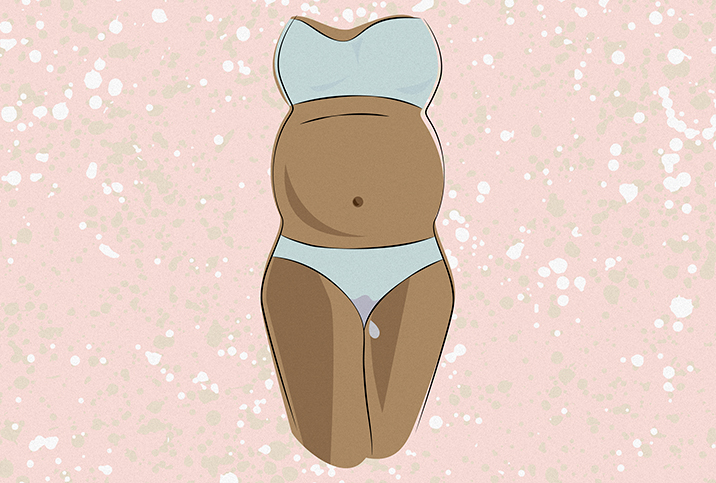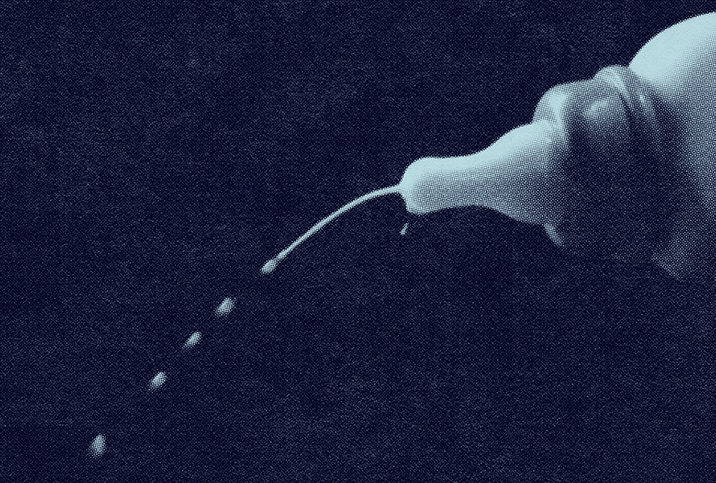Even Your Vaginal Discharge Changes With Pregnancy

Pregnant women experience myriad bodily changes, including to their vaginal discharge. But women may not know what is normal and what they should look for.
Vaginal discharge comes from the skin cells of the vagina and cervix, under the influence of estrogen. It helps to protect the vagina and urinary tract against infections while providing lubrication, explained Tashima Lambert Giles, M.D., a board-certified OB-GYN specializing in routine, preventive care for the female reproductive system at Virginia Commonwealth University Health in Richmond, Virginia.
"Let's start by clarifying that vaginal discharge is normal," Giles stated. "Wouldn't it be strange to think of the mouth without saliva? Similarly, the vagina is a space with discharge that contributes to the health and function of this body part."
According to Giles, normal vaginal discharge can be white, clear, thick or mucus-like but usually does not smell bad.
"Discharge is different for each person, and for each person, it may change at various times," she said.
"Many things can affect this discharge simply because they can affect the cells that help create it," Giles continued, citing factors including diet, exercise, medications, hygienic products, sex, the menstrual cycle—and, yes, even pregnancy.
The ways discharge changes during pregnancy
One of the changes you may experience with your discharge during pregnancy is there will be more of it.
"The hormonal changes of pregnancy are usually the main cause of increased discharge in pregnancy," explained Sara Twogood, M.D., a board-certified OB-GYN in Los Angeles and co-founder of Female Health Education and the online magazine Female Health Collective.
Both estrogen and progesterone levels rise in pregnancy, leading to increased production of cervical fluid and discharge, Giles said.
"These changes also include a change in color and consistency," she continued. "This discharge is usually thin, white or milky. It is called leukorrhea and creates an additional barrier against infection."
On the whole, your vaginal discharge gets heavier during pregnancy, especially in the later stages. The increase of blood flow to the area also contributes to the increase in discharge.
'This discharge is usually thin, white or milky. It is called leukorrhea and creates an additional barrier against infection.'
As estrogen and progesterone continue to increase throughout pregnancy, so does the amount of discharge.
"The third and final trimester is marked by the highest level of vaginal discharge," Giles said.
"In preparation for delivery, the cervix and vaginal walls soften, and the fetal head becomes more engaged with your cervix. This leads to the highest discharge amounts that often contain thick mucus streaks," Giles added.
The extra discharge is normal and nothing to worry about. But you should watch for a few changes.
When to worry about vaginal discharge
"The discharge is usually white or clear, a bit watery or creamy. It can stain underwear, but it should not soak through clothing. There should not be a bad odor, either," Twogood stated.
According to Giles, you should worry about your discharge in these situations:
- You experience itching, redness or swelling alongside discharge
- The discharge is foamy or green in color
- The discharge has a foul odor or is bloody
- You experience abdominal pain, pain with sex or pain with urination
"These can be a sign of infection or complication in your pregnancy," she warned. "But if you are ever in doubt, ask your healthcare provider."
Another possibility to look out for is a yeast infection. The American Pregnancy Association warns that yeast infections are more common during pregnancy, especially during the second trimester. A yeast infection can also cause changes to your vaginal discharge, making it thick, white and cottage cheese-like.
In pregnancy, the expected levels of acid and yeast in the vagina can become unbalanced. When accompanied by the soaring estrogen levels of pregnancy, this can cause the yeast to overgrow, leading to a yeast infection.
As well as the changes in discharge mentioned above, a yeast infection can cause symptoms of redness, itching of the vulva or a burning sensation during urination or intercourse.
A yeast infection isn't dangerous but can be very uncomfortable. If you have any concerns about your vaginal discharge or think you potentially have a yeast infection, speak to your healthcare provider for advice, support and any necessary treatment.
The difference between normal discharge and a mucus plug
You may have heard that some women experience a "show" toward the end of pregnancy where the mucus plug in your cervix during pregnancy comes away. It's a sign that your cervix is getting softer and preparing for childbirth.
Not every woman experiences this situation. The mucus plug is an additional barrier, protecting your baby from bacteria throughout pregnancy. It comes away between two weeks and a few hours before birth, and many women never notice it.
It's different from your usual vaginal discharge. Normally, it appears as a jelly-like substance, either clear, slightly pink or streaked with a small amount of blood. It might come away in one single lump or several smaller blobs over a few hours.
Again, it's nothing to worry about, just an exciting sign that your body is getting ready for labor. However, if you think your mucus plug has come away before you are 37 weeks pregnant, let your healthcare provider know. It doesn't mean you will go into labor early, but it's best to keep them informed to be on the safe side.


















